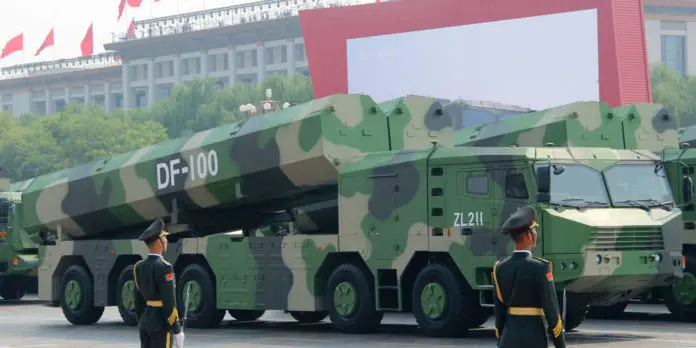- P.O. Box: 11482 Yaoundé, Cameroon; Headquarters: Efoulan, Yaoundé 3
- contact@caessinternational.org

The United States suspects China of conducting a nuclear space test in August 2021, during which a device reportedly circled the Earth before crashing about thirty kilometers from its intended target. This hypersonic test, initially announced by China in 2014, was finally carried out seven years later, surprising U.S. intelligence agencies. Of course, citing military secrecy, Chinese authorities deny having conducted a nuclear space test, claiming instead it was a routine test aimed at verifying reusable spacecraft technology. In reality, the test reveals China’s intention to strengthen and enhance its nuclear deterrence capabilities against potential adversaries.
Belonging to the family of intercontinental ballistic missiles, this test has been classified by the Americans as involving a little-known fractional orbital bombardment system, which also serves to deliver nuclear weapons intercontinentally. The advantage of this bombardment system is its ability to evade U.S. early-warning radars covering the North Pole and to launch an attack via the less-monitored South Pole, thanks to its high maneuverability and mobility. Furthermore, its trajectory remains unpredictable. This weapon system could place China at the forefront of the race to diversify and improve defense systems. Thus, China’s overall strategic goal is to guarantee the effectiveness of a Chinese nuclear counterattack against reinforced, deployed, and future U.S. defenses, which it perceives as destabilizing.
However, skepticism surrounds the veracity of this claimed achievement, which has been denied by Chinese authorities themselves. Some instead suggest it was a Boeing space drone or a small conventional space shuttle. These observers argue for a deterrence status quo, justifying that the United States has long been within the range of Chinese intercontinental ballistic missiles (ICBMs). In this view, U.S. defense policy seems to focus primarily on combating asymmetric state and non-state threats rather than prioritizing China as an adversary. The U.S. objective would be to pressure its rivals into a frenzied, costly military buildup that strains their economies. Since the 1967 treaty banning ballistic weapons in orbit, ICBMs have been designed to maintain mutual respect between great powers, and their modernization efforts remain inherently deterrent.